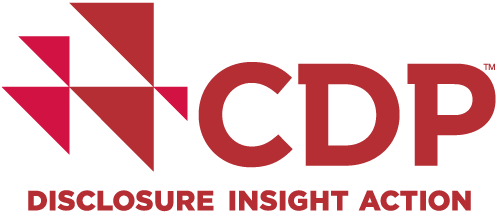CDP’s Net-Zero Alignment Dataset (NZAD) helps capital markets to identify companies with 1.5°C targets and plans, and engage those without such commitments.
To achieve their net-zero commitments, financial institutions (FIs) must align lending and investment portfolios with a maximum 1.5°C of warming. They rely on corporate climate progress to do so. However, only a fraction of the world’s companies have set emissions reduction targets covering all relevant emissions across their value chain (Scope 1 to 3).
How the NZAD helps financial institutions
CDP’s NZAD utilizes target-based temperature alignment scores (ITR), greenhouse gas (GHG) emission metrics and transition plan data to help FIs understand which companies have 1.5°C targets and plans, and assess their credibility and recent performance.
As of December 2023, the NZAD also integrates the Sectoral Decarbonization Approach (SDA) to assess the performance and ambition of high-impact companies against sector-specific intensity trajectories.
Please note, the NZAD has replaced CDP’s ‘Temperature Ratings’ to reflect the addition of indicators that go beyond forward-looking assessments and temperature-scoring. Financial institutions can now evaluate the ambition of companies in context through credibility and trend analysis, alongside target performance scores. These metrics reflect current actions and recent trends, and ultimately assess the likelihood of a company reaching its targets.
Measuring corporate alignment to the 1.5°C goal
The Net-Zero Alignment Dataset includes three company-level outputs:
What is the true ambition of the company’s Scope 1-3 emission reduction target(s)?
The temperature pathways used in the NZAD are derived from the UN Intergovernmental Panel on Climate Change (IPCC) 1.5°C report and the Integrated Assessment Modelling Consortium (IAMC) database of climate scenarios, as well as from International Energy Agency (IEA)/SBTi scenarios for SDA assessments.
The NZAD systematically assesses companies’ entire emissions, producing separate °C temperatures for operational (Scope 1 and 2) and complete value chain (Scope 1, 2 and 3) emissions across short, medium, and long-term timeframes.
The data is supplemented with current temperature scores from the SBTi, resulting in over 9,000 unique company scores. Companies without relevant public targets or a valid history of emissions data are assigned a default temperature score.
Has the company disclosed the key elements of a credible climate transition plan to achieve its target(s)?
The NZAD uses data disclosed by companies that covers 21 key climate transition indicators spanning governance, scenario analysis, financial planning, value chain engagement and low-carbon initiatives, policy engagement, risks and opportunities, targets and emissions accounting.
Learn more about climate transition plans.
Does the company fully disclose its emissions and what is the current trajectory?
The NZAD contains company-reported and CDP modelled GHG emissions data and corresponding disclosure quality metrics for more than 8,000 companies, alongside indicators on emissions reduction trends for over 1,800 companies.
As of December 2023, the NZAD also features Target Performance metrics, which track the actual progress of companies against the assumptions of their targets.
Benefits of the dataset
Open-source scientific method – The NZAD uses a public, expert-reviewed and open-source target assessment methodology developed by CDP and the World Wildlife Fund (WWF), which can be used for science-based targets through the SBTi.
Powered by reported CDP data – The NZAD uses CDP GHG emissions, targets and transition plan data that has been disclosed by companies, and subsequently cleaned by CDP’s dedicated Data Analytics team.
Assess target credibility – See whether corporates have clear, time-bound climate transition plans to achieve their targets.
Request dataset demo
Please complete this form to learn more about the NZAD including its methodology, and to request a demo. Our Capital Markets team will respond soon after you submit your request.

